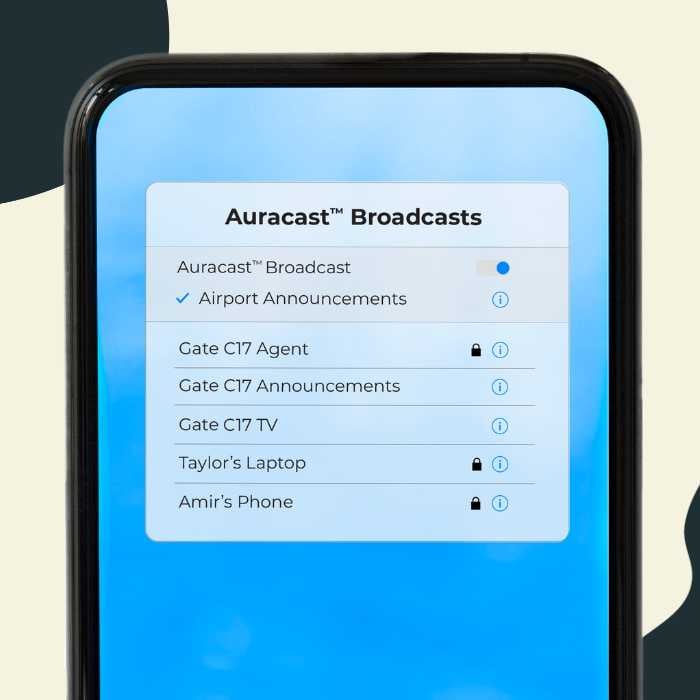If you're a hearing aid wearer, you likely use Bluetooth to listen to phone calls or stream audio to your hearing aids.
But have you heard about Auracast?
This new, exciting technology will transform how you listen to audio through your hearing technology in the coming years.
This article will tell you everything you need to know about Auracast, how it's different from existing Bluetooth options, which hearing aids currently offer Auracast, and some of the exciting things we will see in the future.
Let's start with some background.
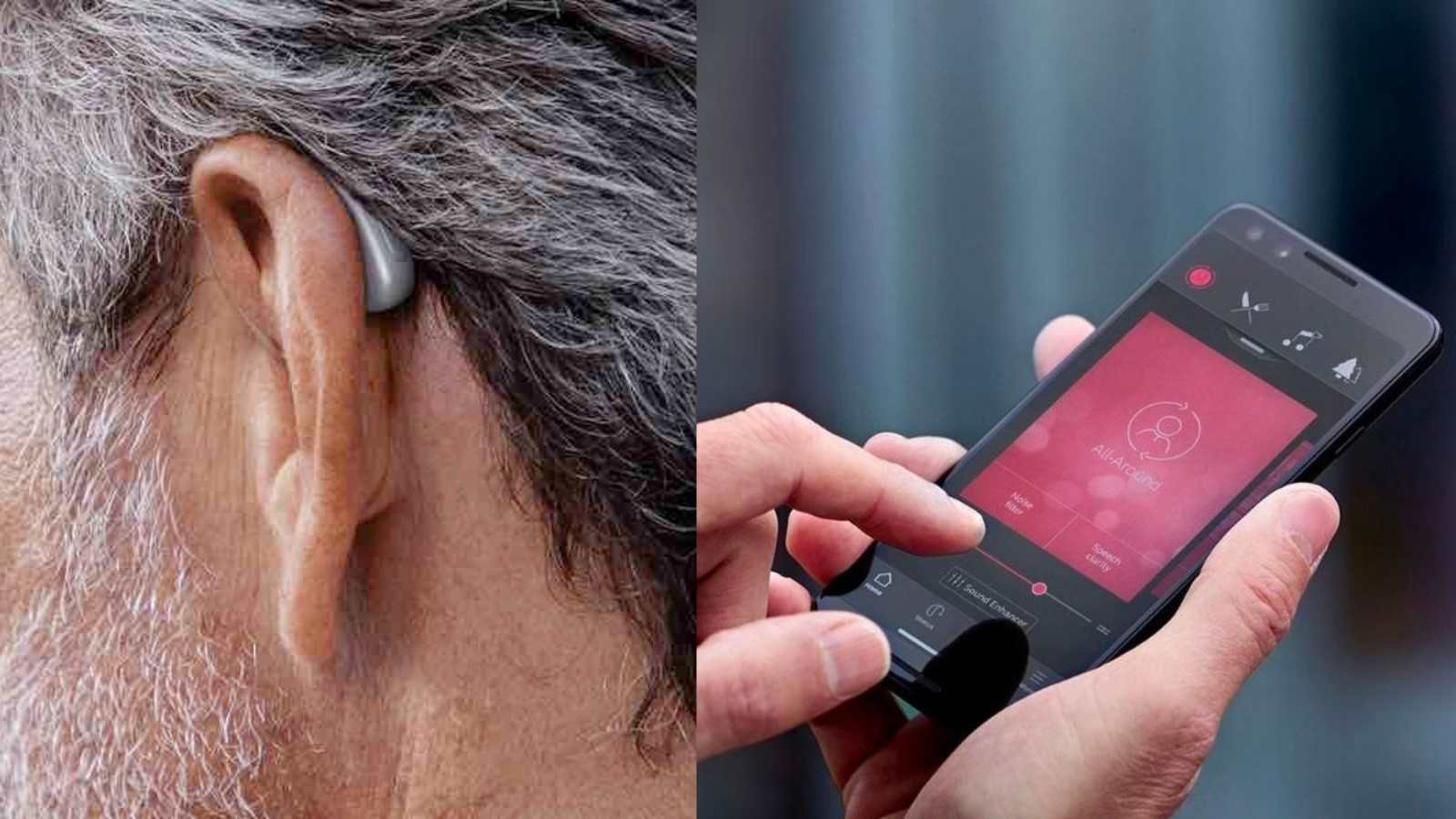
Bluetooth streaming is in significant demand these days. Most new, premium hearing aids include streaming from iPhone and Android devices.
One of the big challenges to putting Bluetooth streaming capabilities into hearing aids is battery life.
Most wearers need their hearing aids to last 15+ hours per day and also want the devices to be as small as possible. This creates some technical challenges that don't exist in the broader headphone market.
Until now, most hearing aid makers have gotten around the constraints by using Apple's Made For iPhone feature and android's ASHA protocol.
The current solutions work well, but they could be better.
In 2020 Bluetooth unveiled a new global standard called Bluetooth LE Audio (LE is short for "low energy"). The announcement set the stage for some significant innovation in the audio sector.
Specifically, LE audio delivers higher-quality sound through the airwaves with half the energy.
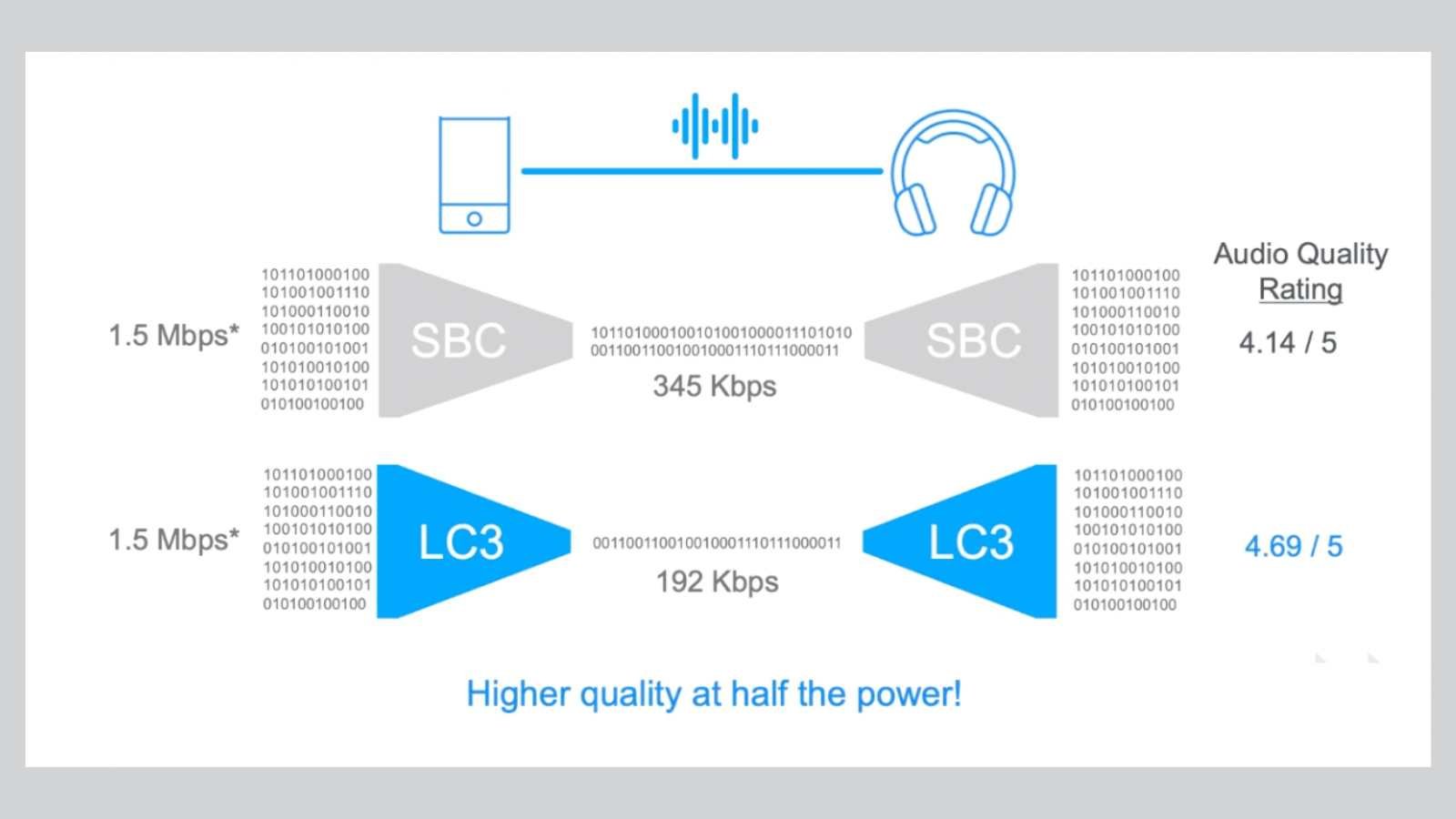
Before we talk about Auracast, here are a few terms to know:
Low Energy (LE) Audio is the broad name used to describe new and improved Bluetooth technology.
Bluetooth 5.2 is the protocol number or version of Bluetooth that includes this new capability.
L3C Codec is the new underlying code that works behind the scenes to compress the audio for transfer and uncompress it for playback. Watch this video to learn more about L3C Codec.
Here's what all this change means for hearing aids.
The most important thing to know is that Bluetooth is getting some new superpowers that will enable better streaming and lower processing time with less battery power. That's important for the future of hearing aid design in lots of ways.
Specifically, it opens the door for Auracast.
What is Auracast?
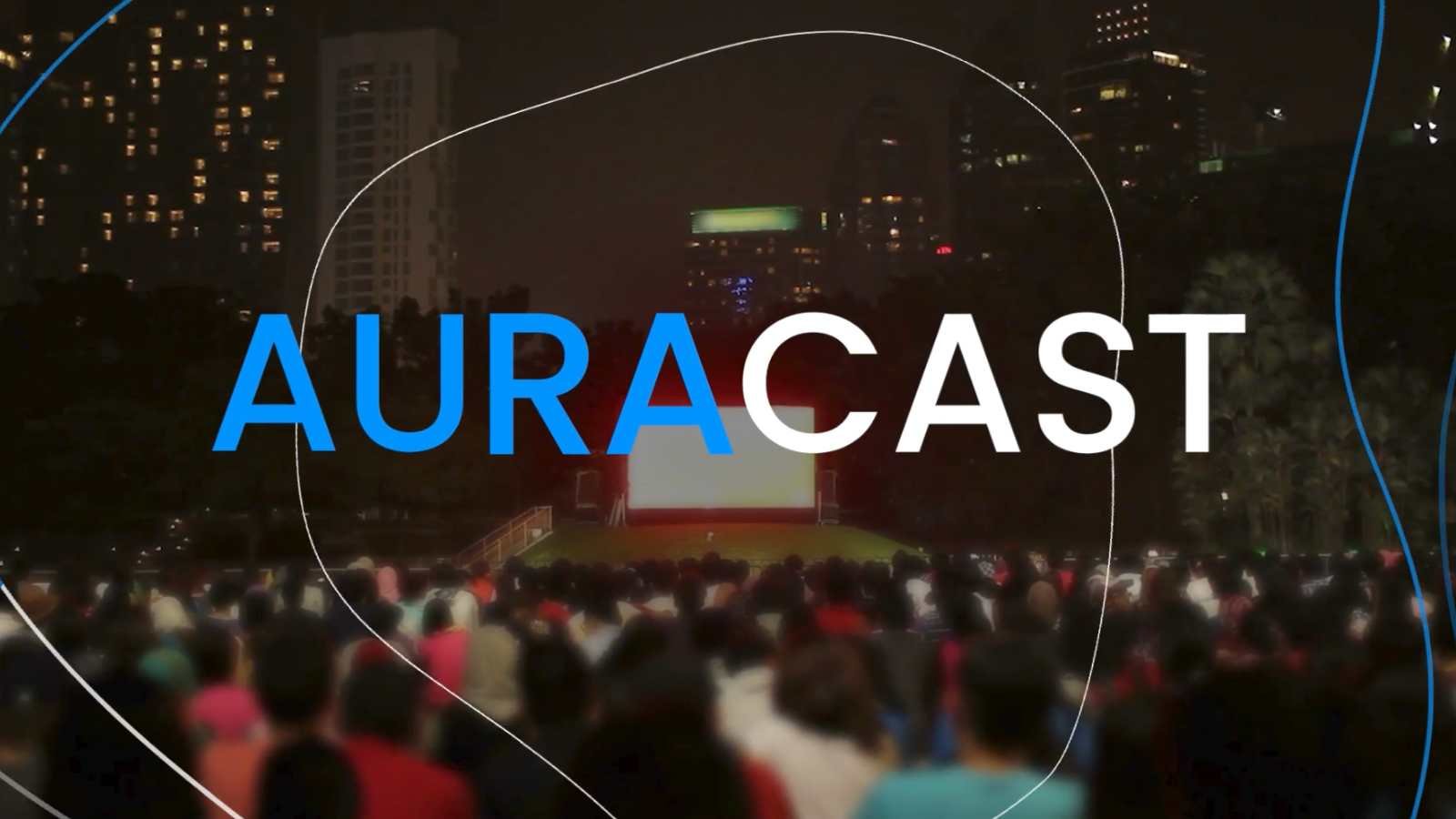
Auracast is a new protocol from Bluetooth that allows shared audio experiences.
Imagine tuning into a muted TV in a doctor's waiting room or streaming a theater performance directly into your hearing aids or headphones.
The innovation will be helpful to anyone with a pair of Bluetooth headphones but might be especially exciting for those with hearing loss.
A recap of what we've covered so far.
A breakthrough in technology called L3C Codec gave way to a new Low Energy version of Bluetooth (version 5.2) that will enable Auracast, which provides shared audio experiences. (In case you're wondering, LE Audio hearing aids, Bluetooth 5.2 hearing aids, and Auracast hearing aids all mean the same thing.)
Benefits of Auracast
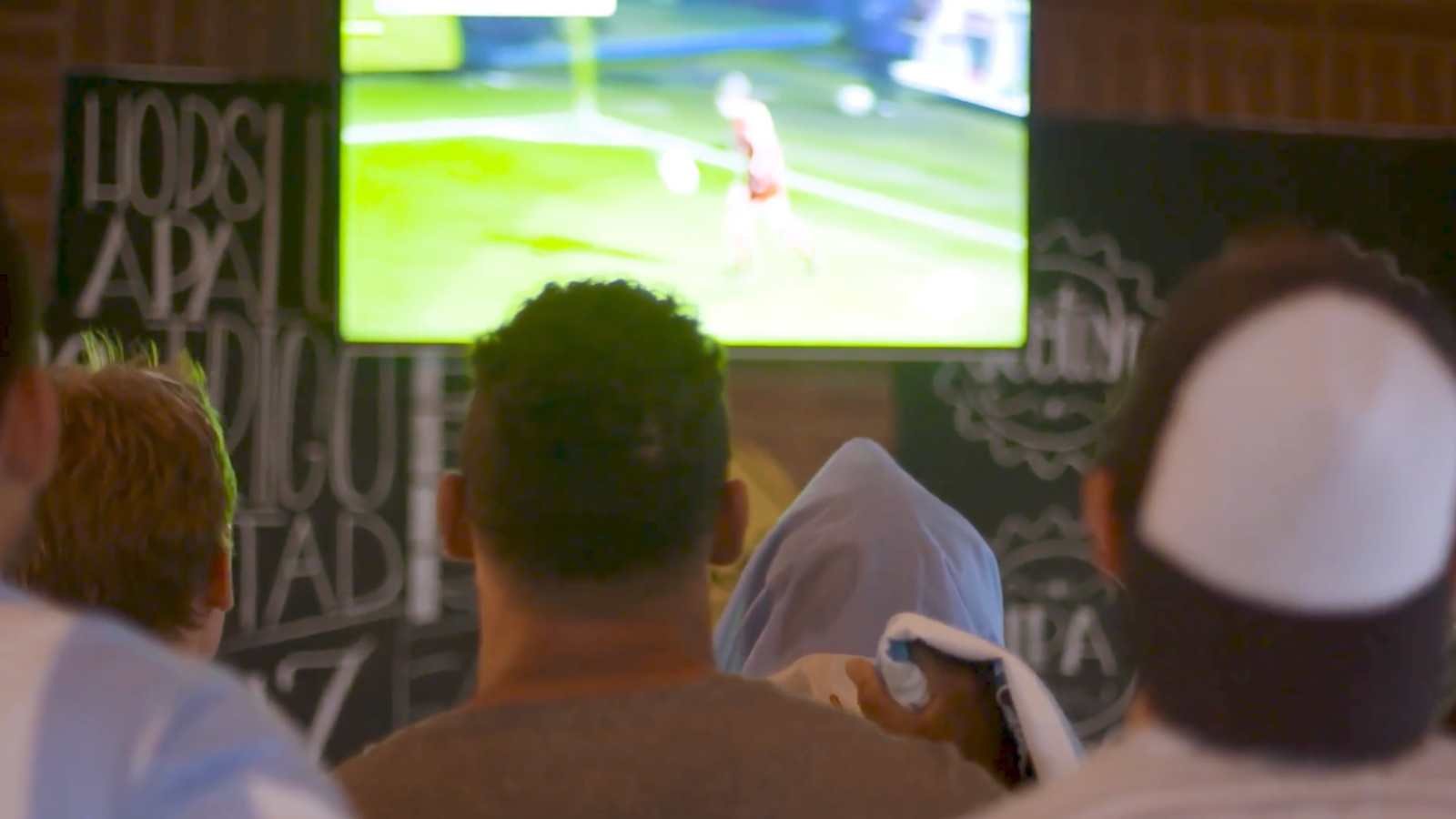
Auracast will provide a global capability for devices to universally access and receive the same audio experience.
In that sense, it is similar to how we use Bluetooth to stream audio now, sending audio wirelessly to your device. However, there are some key advantages to the newer Auracast technology.
Universally accessible
Auracast will be universally accessible and available both with and without a Smartphone. Although we have yet to see this new technology in action, it could mean a much more streamlined way to access audio.
For the future with more widespread implementation, it could mean a much more streamlined way to access audio.
Is Auracast currently available?
There is currently only one hearing device that is fully Auracast-enabled: the Resound NEXIA hearing aid and now also an accessory from ReSound, the Multi Mic+ that enables you to share audio with others with Auracast-enabled hearing aids.
Here are some highlights for how the connection might work in a public space as infrastructure becomes more widely available:
Less Battery Drain
Auracast will also require less power than needed for current Bluetooth streaming, which means that the hearing aid battery drain will be much less when using Auracast than traditional Bluetooth.
Share Your Audio Experience
Additionally, suppose you are in a public venue that uses Auracast. In that case, anyone with compatible hearing aids, headphones, or other assistive devices can join the Auracast network and listen to the audio.
How will Auracast change the hearing aid experience?

Auracast has many exciting implications for hearing aid technology and other audio or listening technology. Here are just a few points to look forward to:
- Share audio with others. Want to listen to something with a friend? In the past, you'd probably offer headphones so they could hear the song or audio clip. However, Auracast technology means your friend can access the audio with their audio technology. As mentioned above, this is currently available with ReSound NEXIA and the Multi Mic+ accessory.
- Hear better in public places. Who hasn't had trouble hearing an overhead announcement in a busy airport? Auracast will enable listening to announcements and other information without background noise. We’re not yet there, but it will likely roll out in the next year or two.
- Listen rather than watching 'silent TV' in the waiting room. If you're in a waiting room or watching a sports game in a bar, you can't typically hear the audio on the TV. Auracast will enable listening to and watching the program on TV.
- Those with unilateral hearing loss will no longer have to choose whether to hear audio through their hearing aid or an earbud in their normal hearing ear. As long as both technologies have the capability, they can listen to the audio in the hearing aid ear and through headphones in the other ear.
Will Auracast replace Telecoil?
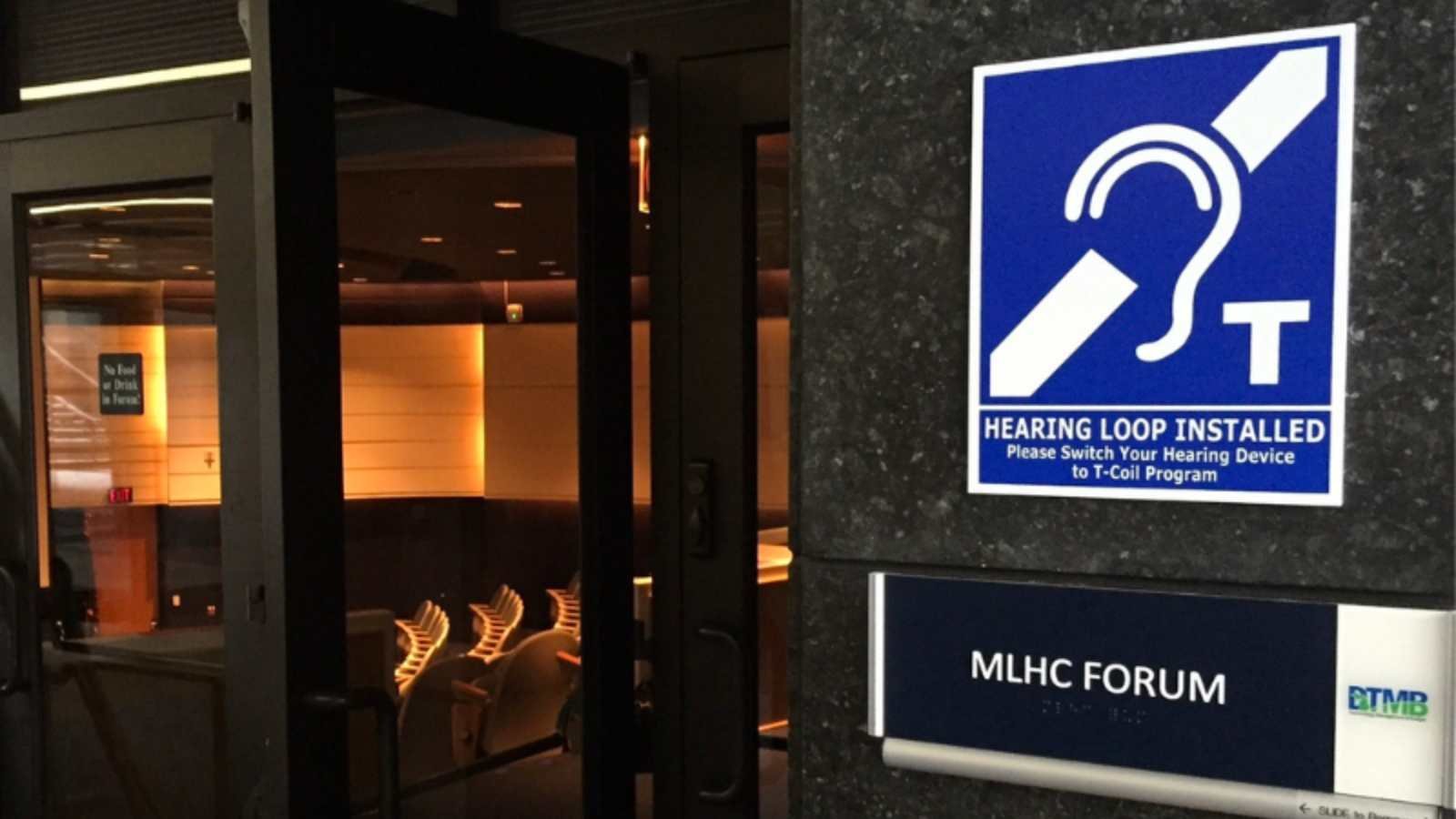
Many hearing aids have a telecoil inside. Telecoil allows hearing aid users to connect their hearing aids directly to landline phones and other sound systems without using an intermediary device like an induction loop system or neck loop.
This technology is sometimes available in public venues or houses of worship, depicted with the telecoil symbol.
The short answer is that telecoil systems will remain available for a while as Auracast technology rolls out. However, since Auracast provides a clear, low-energy, direct, and universal option for streaming, there may be less need for Telecoil in the future.
The same is true for Bluetooth Classic Audio versus low-energy Bluetooth. The low-energy Bluetooth option is preferred due to the reduced battery drain, improved audio quality, and improved interoperability. Expect your hearing aids of the future to access Bluetooth using Bluetooth LE instead of current forms of connection.
Technology advancements due to Auracast and Bluetooth 5.2 will mean smaller hearing aids and better audio sound quality and experience.
Auracast vs. Telecoil
Telecoil technology is known for its simplicity and efficiency, delivering music or other audio, especially in public spaces equipped with hearing loop systems. It is widely available for most existing hearing aids, eliminating the need for additional purchases. However, its usability can be limited in areas without induction loop systems. Additionally, sound quality can vary, with connection sometimes being less than desirable.
On the other hand, Auracast stands out for its advanced digital signal processing, convenient Bluetooth connectivity, and enhanced sound quality. It provides a personalized listening experience and seamless connection to electronic devices like smartphones, televisions, and laptops.
Although Auracast technology is not yet widely available due to its recent market introduction and infrastructure requirements, its future potential is immense. Once fully incorporated into hearing aids and audio devices, Auracast will significantly improve audio accessibility in public venues.
Imagine connecting your hearing aid directly to the public audio system at a bustling airport or busy conference, experiencing crystal-clear sound. This promising future of high-quality, personalized sound is within reach—it's just a matter of time.
How is Auracast different than Bluetooth Classic?
A Bluetooth signal is often used to connect one device with another. However, if you connect your hearing aids to your TV via Bluetooth, your family members won't receive the audio that streams through your hearing aids to your ears. You'll also need to be within certain range to receive the Bluetooth signal, typically within 20 - 30 feet.
Auracast increases both the number of possible devices that can receive the signal as well as the total range of the signal.
There are two key parts in an Auracast broadcast: an Auracast transmitter and an Auracast receiver. A transmitter can be a Smartphone, TV, computer, or other device that sends the Auracast broadcast out to a device that can receive the signal. An Auracast receiver can include devices, such as hearing aids, headphones, earbuds, or other devices that can pick up the Auracast broadcast. One transmitter can send out a signal, but there are an unlimited number of devices that can receive the signal.
The range that an Auracast transmitter can reach is about ten times the distance - about 300 feet.
Which hearing aids currently offer Auracast capability?
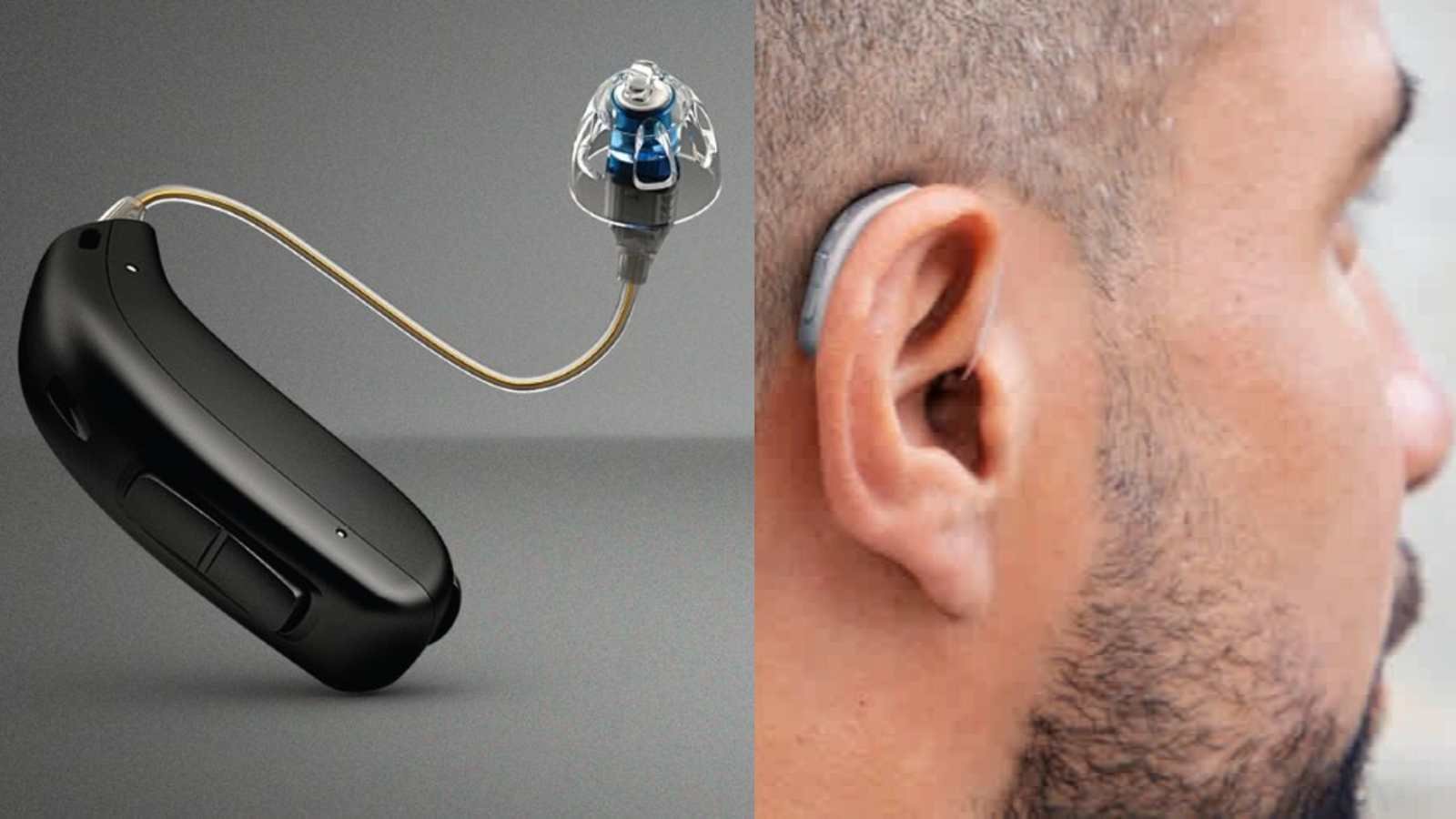
Auracast is not yet widely available. However, some manufacturers have started to implement the technology. ReSound NEXIA hearing aids are the first, fully Auracast-ready hearing aids on the market. Signia Pure Charge&Go IX devices have the hardware and require only a future firmware update to activate Auracast.
The technology will slowly roll out over the next five to seven years, with a significant inflection point expected by 2025.
Many other hearing aid manufacturers have already committed to developing technology that will work with Auracast in the coming years. We'll keep you posted as other manufacturers follow suit.
Reports from September 2022 show that at least 103 listings of consumer headphones and gaming devices already support the LC3 codec, with the list growing constantly. This list will continue to expand over the next 12 to 18 months.
Current Auracast Capable Hearing Aids
Here is a list of the current hearing aid manufacturers and their status with Auracast.
ReSound NEXIA is the first fully-Auracast capable hearing aid.
Signia Pure Charge&Go IX is currently Bluetooth LE-audio ready. It has the hardware in place and will be fully compatible following a coming firmware update.
Oticon Intent has Auracast capable technology.
Phonak does not yet have Auracast capable technology. However, the unique Bluetooth Classic connection that Phonak uses allows connection to multiple devices.
Widex does not yet have Auracast capable technology.
Starkey does not yet have Auracast capable technology.
Should I invest in an Auracast-enabled device?
This is a great question to consider when evaluating a hearing aid purchase. For those who have recently purchased hearing aids in the last year or two, it probably doesn’t make sense to go out and purchase a new device that is Auracast-enabled. However, for those planning to purchase new hearing aids in the near future, this is a good feature to look for in a new pair of hearing aids. For example, if your current hearing aids are four or five years old, out of warranty, and you’re considering your next set anyway, Auracast can make a lot of sense. Within the next five years, we expect Auracast to be relatively widespread, and if your devices have that functionality, you’ll be ready to go once it is in place.
Final Thoughts
Auracast is a new wireless technology with many potential applications for hearing aid users.
Auracast builds on the underlying Bluetooth LE protocol and makes shared listening experiences more accessible than ever.
While Auracast is yet to be available on any hearing aid models, we expect it to be available within the near future.
There are many potential applications for Auracast technology. For example, imagine streaming audio directly from a TV to your hearing aids without purchasing an expensive external streaming device or easily hearing speakers at a conference or watching a movie in the movie theater.
This new technology could provide many advantages, making listening to audio with excellent sound quality easier without additional intermediary devices.
Stay tuned for more updates on this exciting new technology.



